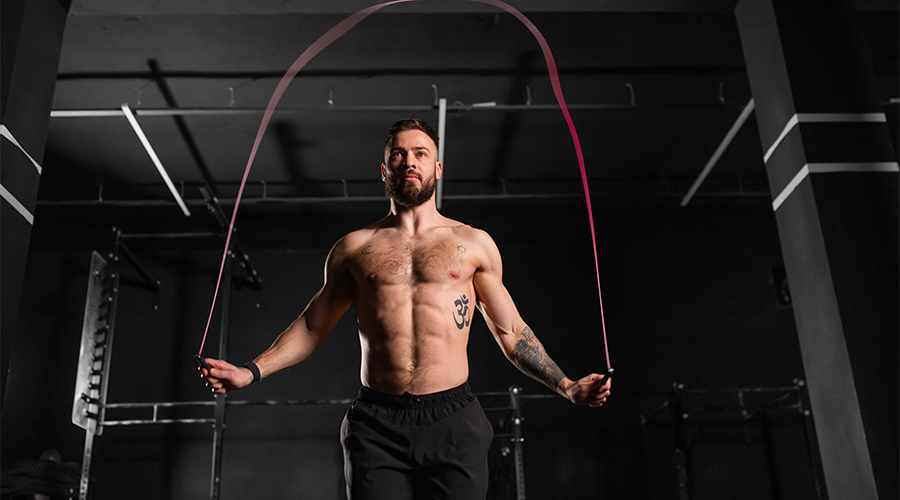How to Squat Like a Pro?
20 April 2023
If you want to squat like a pro, all you need is a good sense of balance, flexible hips, ankles and shoulders. Learn more.

Whether you’re a bodybuilding initiate or a fitness enthusiast squat is the king of all exercises. When you compare squat with Bench Press, it works more muscles with heavier weight. Coming naturally to humans, squat finds favour of American Council of Exercise for a toned butt to expensive butt-busting gadgets. Still, many fitness athletes are unsure about squats fearing that it might damage their knees. Put your worries to rest and learn the right technique to squat, because when done properly, squat helps improve knee stability, strengthens connective tissue along with toning the gluteal muscles.
BENEFITS
1. BUILD MUSCLE
Your fitness goal could be either building muscle or losing weight, but you could not go wrong with a squat because no other exercise works better at stressing the quads, hams, and glutes in one single movement. Squats are so intense that they create an anabolic environment and make the body release hormones that are vital for the growth of muscle tissue and improve the strength of your upper and lower body.
2. BURN FAT FASTER
A squat is a compound exercise and it each time you do it, you recruit more muscle fibers during a workout and improve your fat loss success. The intensity of squats helps you burn more fat and calories after your workout. Also, when you squat, you build an anabolic environment required for muscle gain. For each pound of muscle gain, your body will burn 50-70 calories per day. Keep squatting and count the calorie burn.
3. IMPROVED DIGESTION
Humans are the only animals that have to push feces upwards due to the anatomy of our colon. The muscular action of the squat exercise improves the flow of fluids in your body and eases the passing of waste through your bowels that helps improve your digestion.
4. MAINTAIN MOBILITY AND BALANCE
During a squat, you primarily recruit muscles around the hips and knees, but all joints below the belly button (hip, knee, ankle, foot) and most of the spine need both stability and mobility to squat properly. Squats, also work out your core muscles and help prevent injury by improving your flexibility.
5. BETTER POSTURE
For desk-strapped professionals, a squat comes as a posture saviour. Since it activates glutes it allows you to straighten out your back from the bottom up. Begin squatting with light weights on your shoulder, till your posture becomes better.

HOW TO SQUAT FOR BEGINNERS
- Stand with your feet wider than hip-width and your toes turned out slightly. Place your hands by your palms. You can even keep your hands in front of you with palms facing down and parallel to the floor, like they are touching someone’s shoulder.
- Keep your chin up, chest out and shift your weight back into your heels as your hips begin to push toward the wall behind you.
- Bend your hips and knees simultaneously and push your weight down. Keep the back straight and engage your core.
- Keep lowering till your thighs are parallel to the floor. If the stretch is too much for you and your knees buckle, lower back bends, return to the start position.
- Keep lowering without compromising on the posture till your knees go over the toes.
- While maintaining your posture exhale and push yourself upward to the start position. The hips and torso should rise together. The feet remain flat on the floor and knees are aligned to the second toe.
PARALLEL OR FULL SQUATS
For most weight lifters and bodybuilders it is difficult to squat full range of motion or a deep squat while maintaining their spine erect at the same time with that heavy dumbbell on their shoulders. Rather than compromising on the posture, keep the spine straight and go as low as you can. As you develop the flexibility, begin to sink your squats a few inches below parallel, without rounding the lumber back and your posterior chain muscles, calves, hamstrings, and glutes are activated better. Increased stress on these muscles helps build more force when you move to the standing position once again. Naturally, deep squats are suited for hypertrophy.
As you begin to get the hang of squats, use weights. Squatting deeper will become more difficult as weights increase. Keep the posture and the form intact because shallow squats with more weights are any day better than deep squats with fewer weights









 100% Safe & Secure payments:
100% Safe & Secure payments:




